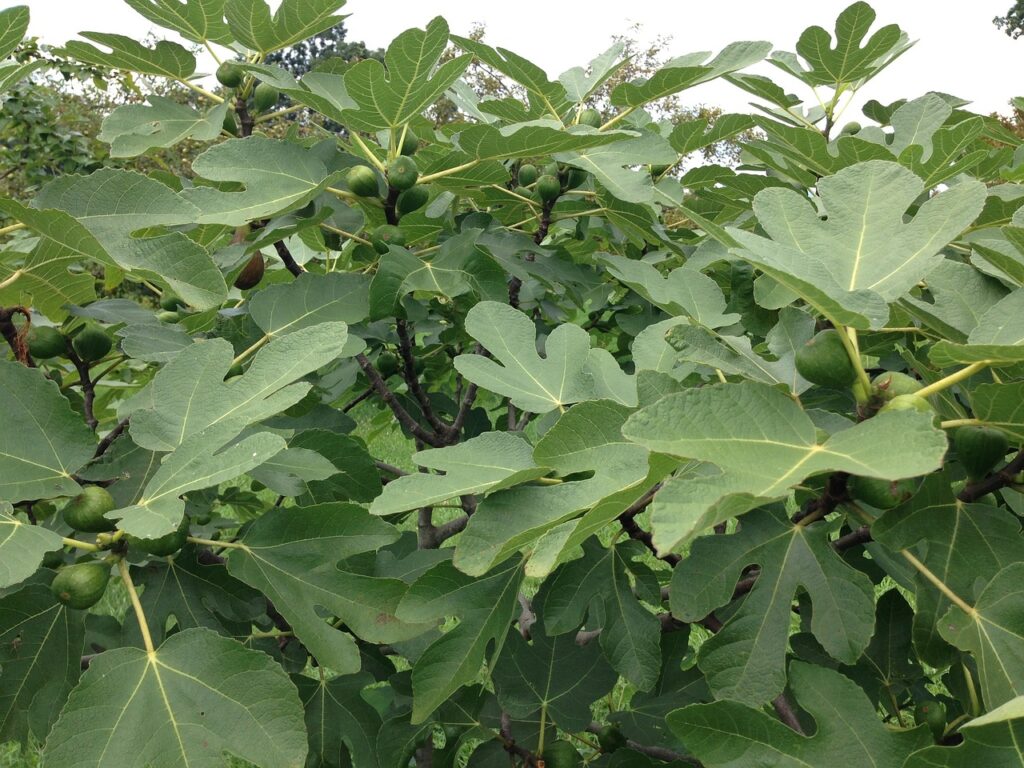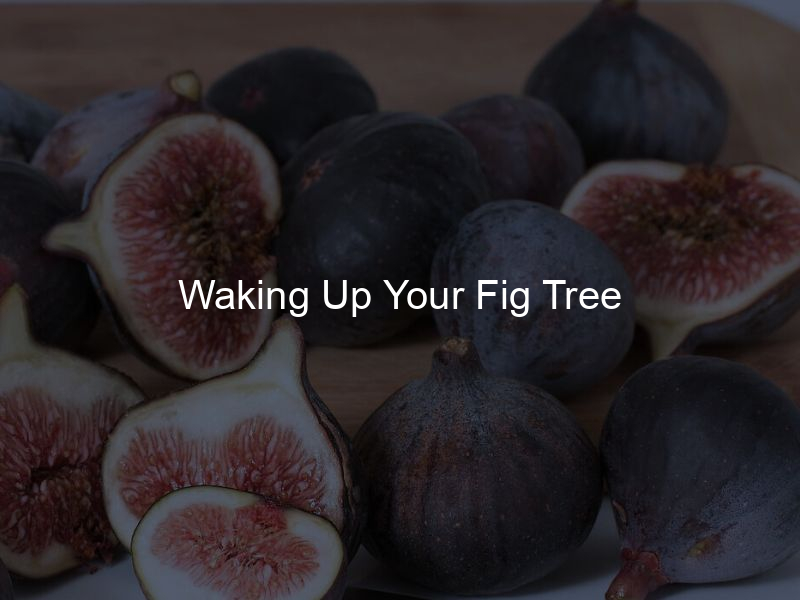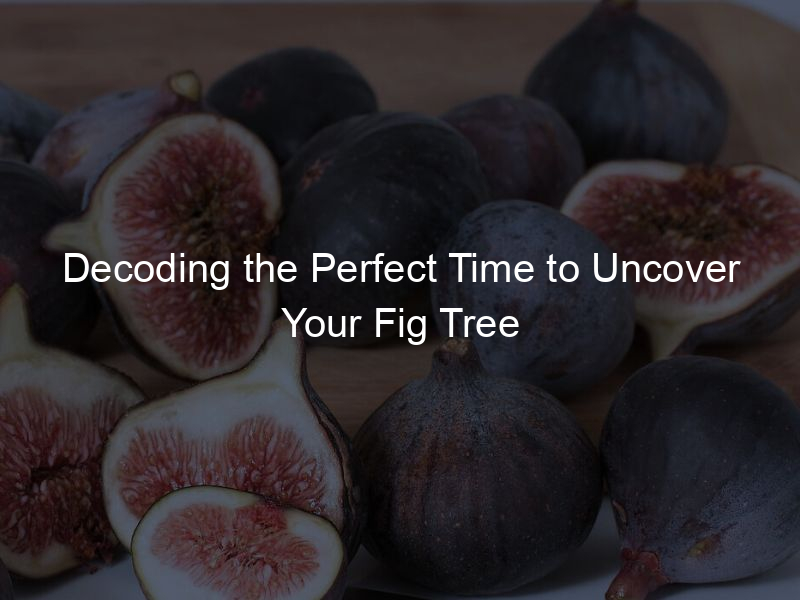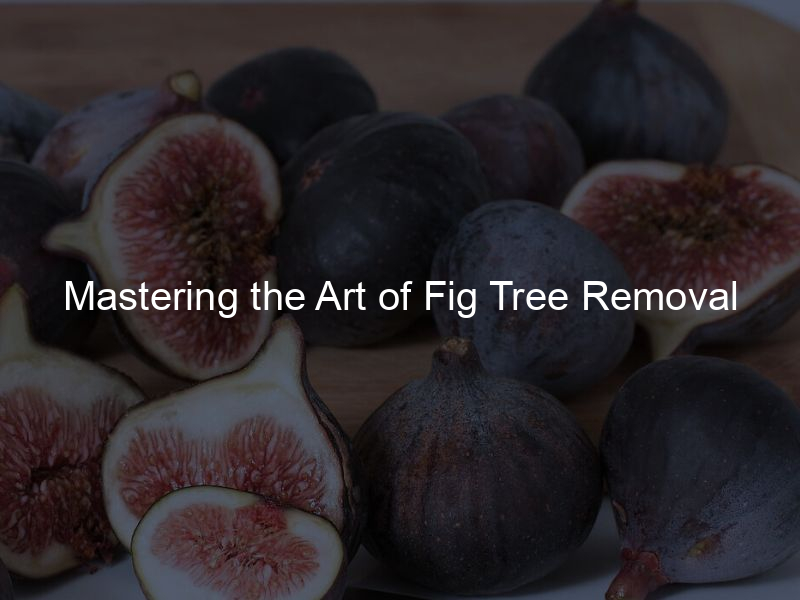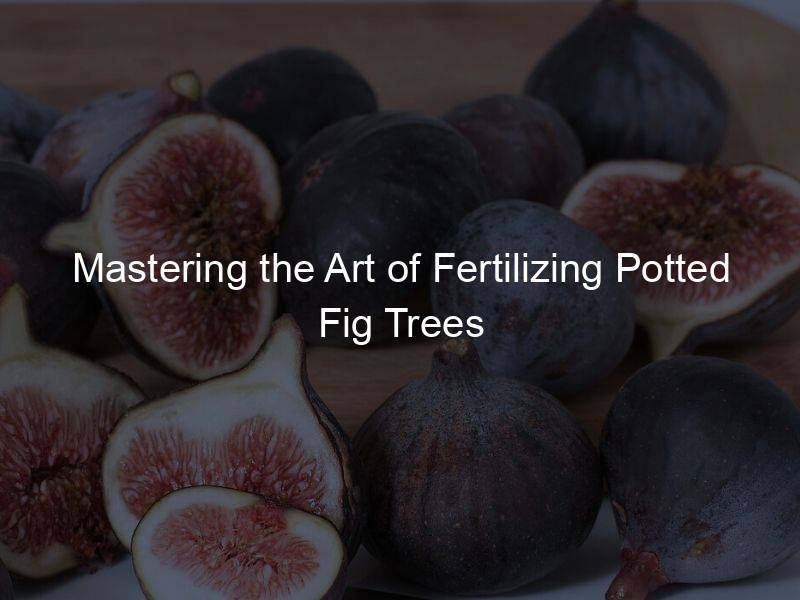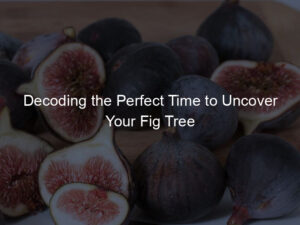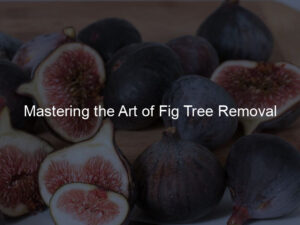Fig trees (Ficus carica) are an ancient species of tree that have been around for centuries. They are known for their unique foliage, which makes them a popular choice for landscaping and gardening projects. A fig tree (Ficus carica) has distinct characteristics that make it easily recognizable. Here’s what a fig tree typically looks like:
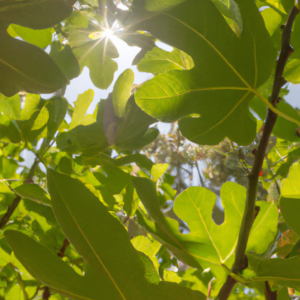
- Leaves: Fig tree leaves are large and have a unique shape, resembling a hand or a maple leaf. They are alternate, meaning they are arranged in an alternating pattern along the branches. Fig leaves have three to five lobes, and the margins are deeply serrated (toothed) with pointed tips. The leaves are typically glossy and have a leathery texture.
- Fruits: Figs are the main attraction of the fig tree. The fruits grow directly on the branches, and they vary in size, shape, and color depending on the variety. Common colors include purple, brown, green, yellow, and black. Figs are usually pear-shaped or round, but some varieties can be more elongated or bulbous.
- Branches and Bark: Fig tree branches spread out to form a wide canopy with dense foliage. The bark of young fig trees is smooth and grayish-brown, becoming rougher and fissured as the tree ages.
- Size: Fig trees can vary in size, depending on the variety and growing conditions. They typically range from 10 to 30 feet in height, but some can grow taller under ideal conditions. Some varieties may also be more compact and bush-like in their growth habit, especially when grown in containers or smaller spaces.
- Root System: Fig trees have a strong root system that can penetrate deep into the soil. This helps them survive and thrive in various environments, even in regions with hot and dry climates.
- Flowers: Before the fruits develop, fig trees produce small, inconspicuous flowers. These flowers are unique because they are inside the fig fruit itself. They are pollinated by specific wasp species that enter the fig through a small opening called the ostiole.
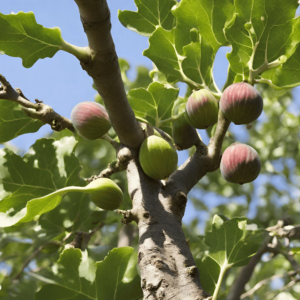
Overall, fig trees are visually striking with their large, distinctive leaves, and the sight of their ripe, luscious fruits hanging from the branches is a sight to behold. They are not only beautiful but also provide a delicious and nutritious fruit that has been enjoyed by humans for thousands of years.
Is Ficus Carica evergreen?
No, the ficus Carica (fig tree) is a deciduous tree. It has glossy green leaves that fall at the beginning of winter and grow again yearly in spring. The leaves can vary in size from small to large, and they are broad, rough, deeply lobed, or sometimes nearly entire. They are often shaped like a teardrop or heart.

What is unique about a fig tree?
It is an iconic symbol of the Mediterranean, with its unique foliage and delicious fruit. Fig trees bring some old-world charm to any landscape and can be enjoyed for their beauty and bounty!
Not only are they a beautiful addition to any landscape, but the fruit of a fig tree can be eaten and enjoyed. Fig trees provide an abundance of sweet and delicious fruits that make great additions to salads, desserts, smoothies, and more. Figs can also be dried for long-term storage or used in recipes like jams or preserves.
Plus, the flowers of a fig tree attract pollinators to your garden and help support local ecosystems. In short, fig trees are a fantastic addition to any outdoor space!
Is a fig a tree or a bush?
A fig tree is a type of tree, not a bush. Fig trees typically have long trunks and large branches spread outwards, creating a beautiful silhouette against the sky. At the same time, the fig tree can be pruned and grown as a bush, preferably in a pot.
What is the growth pattern of the fig tree?
Fig trees tend to grow quickly, reaching their full height and width in just a few years. They prefer warm climates with plenty of sunlight and are hardy enough to withstand frost or snowfall for a short period. Fig trees need little maintenance beyond occasional pruning for shape and size control. Fertilizing will help keep the fig tree healthy and produce abundant fruit! Additionally, ensure your fig tree is planted in well-draining soil, as they don’t tolerate standing water very well.
Where does the Common Fig Tree Grow?
The common fig tree is typically found in Mediterranean climates but can also be grown in many other areas with the right conditions. They do best in warm climates that receive ample sunlight and need well-drained soil to thrive. Additionally, fig trees are drought-tolerant once established and can withstand cold temperatures below -20°C (-0°F). Fig trees have been known to grow successfully as far north as England, although it is not recommended for all regions.
Can you eat figs?
Yes, you can eat figs! Figs are delicious and nutritious fruit humans have enjoyed for centuries. They are a great source of dietary fiber, vitamins A and C, calcium, iron, magnesium, potassium, and other essential nutrients. Plus, they make a fantastic addition to salads or desserts! Figs can be eaten and enjoyed fresh or dried. Fresh figs taste sweet and have a delicate texture, making them ideal for eating out of hand. Dried figs can add flavor to recipes like jams or preserves and provide an excellent snack on their own!
Fig trees provide an abundance of sweet and juicy fruits throughout the year that you can pick directly from the tree when ripe – what could be better?
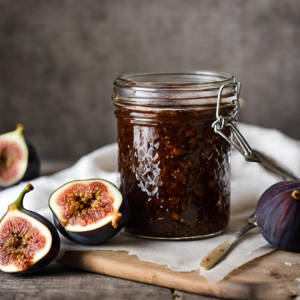
Are figs poisonous to dogs?
No, figs are not poisonous to dogs. Figs may benefit canine health as they contain essential vitamins and minerals that can help support overall well-being. However, feeding your dog fresh or dried figs in moderation is necessary, as too many can lead to digestive issues like vomiting or diarrhea. It’s best to consult with a veterinarian before feeding any human food to your furry friend!
When should I feed my dog figs?
It is best to feed your dog fresh or dried figs in moderation. Start with a few pieces at a time and observe the effects before increasing the portion size. If your dog experiences any adverse signs such as vomiting or diarrhea, discontinue feeding and consult with a veterinarian immediately.
Which fig tree is the best?
Fig trees are a beautiful and versatile addition to any garden, adding both beauty and fresh produce. With several varieties to choose from, it’s important to know the differences between them. The Brown Turkey fig has blue-black skin and pink flesh, with a sweet and mild taste. The Black Mission fig, on the other hand, is deep purple and has a richer flavor with a hint of berry notes. For a taste of honey with a light texture, the Celeste fig is a great choice, recognizable by its light brown skin and pink flesh. Lastly, the Kadota fig has pale green skin with a sweet flavor and is great for both drying and fresh eating. Knowing the variations between these fig trees can help you choose the perfect fit for your garden and culinary needs.
Factors to Consider When Choosing a Fig Tree
If you’re thinking about bringing a fig tree into your garden, there are a few factors to keep in mind. Firstly, consider the climate in your area as fig trees grow best in certain temperatures. Additionally, you’ll want to check the growth rate of the tree to ensure it fits in with your gardening schedule. Yield is another important consideration, as you’ll want to choose a tree that produces enough fruit to make it worth your while. It’s also important to take into account the hardiness zone in which you live, as different trees have varying levels of tolerance to different climates. Lastly, choose a tree that’s resistant to disease for a healthier and more thriving garden. Keep these pointers in mind and you’ll be on your way to successfully growing a delicious fig tree.
Tips for Growing a Healthy Fig Tree
Few things are better than having fresh figs readily available in your backyard. But in order to enjoy this delicious fruit, you need a healthy fig tree. To ensure your tree thrives, it’s important to choose the right location. Look for a site with soil that drains well and receives plenty of sunlight. Fertilizing regularly will also promote robust growth and fruit production. Additionally, pruning your tree is crucial to maintain its health. Don’t be afraid to trim away any dead or diseased branches. Follow these tips, and in no time, you’ll have a flourishing fig tree that will provide you with plenty of scrumptious figs to enjoy.
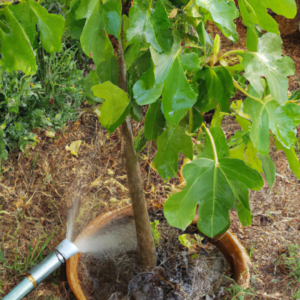
Best Practices for Maintaining Your Fig Tree
A fig tree can be a beautiful addition to any garden, but it requires some care in order to thrive. One of the best practices for maintaining your fig tree is to mulch around its base. Mulch helps to retain moisture in the soil and also helps to keep the roots cool during hot weather. Additionally, be sure to water your fig tree during dry periods. When the soil is dry, it’s time to give your tree a good soak. However, be careful not to overwater, as this can cause root rot. Lastly, avoid overfertilization. Too much fertilizer can cause your tree to grow too quickly, making it more susceptible to disease and pests. Stick to a balanced fertilizer and your fig tree will thank you!
Troubleshooting Common Problems Associated with Figs Trees
If you have a fig tree, you know how rewarding it is to harvest fresh figs right from your backyard. However, like any other plant, fig trees can fall victim to pests and diseases. Recognizing the early signs is crucial to keeping your tree healthy and producing a bountiful harvest. Whether it’s an insect infestation or a fungal disease, treating the issue quickly is vital. You don’t want to wait until it’s too late and risk losing your tree altogether. By staying vigilant and taking proactive measures, you can keep your fig tree thriving year after year.
Overview of Different Fruiting Styles and Varieties
Figs are one of Mother Nature’s tastiest treats. With a variety of textures, flavors, and colors, these fruiting trees are a real delight for any gardener or fruit lover. But what makes each fig different from the other? Well, each type of fig tree has its own unique way of producing fruits, known as the fruiting style. Some fig varieties have fruits that can only grow on old wood, while others can have fruits sprouting on new branches. Then there are figs that require both old and new wood to produce their fruits. It’s truly a fascinating process and one that every fruit enthusiast should learn about.
No matter what type or variety of fig tree you own, taking the time to properly care for your tree can ensure that it thrives and provides you with an abundance of sweet figs. Be sure to consider factors like climate and growth rate when selecting a variety, provide adequate water and sun exposure when caring for it, and keep an eye out for signs of disease or pests. With careful management from sowing the seed to bearing its fruit, the rewards are worth it! If you’d like to start growing fig trees in your garden but are feeling overwhelmed by all of the options available, our guide on Types of Fig Trees is a great place to start. Remember: no matter which variety you choose, make sure you give your tree plenty of love and attention to create a lush oasis.
This article provides an in-depth look at fig trees, describing their unique foliage, delicious fruit, and local ecosystem benefits. It explains how to enjoy the fruits of a fig tree by eating them fresh or dried and offers information about feeding figs to dogs. The article ends with recommending that you provide your dog figs in moderation and consult with a veterinarian before you do so. We recommend checking out our comprehensive blog posts for further reading on everything related to growing, harvesting, and enjoying the fig tree’s fruit.
